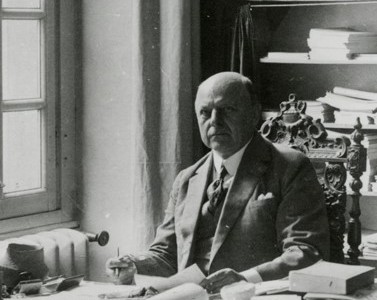Following my last post regarding what appears to be a loros on a miniature representing Empress Matilda, a lady on the 12th Century Enthusiasts Facebook group brought a potential problem to my attention:
“I do have a quibble about the fabric possibly being block printed / block printed fabrics being common. This is sadly not true. I got all excited about this too, years ago, and did a dive into it, only to find that the sources that were claiming this (based on Forrer’s work) were disproven. Donald King (A highly respected textiles curator at the V&A) in a 1960 paper showed that the 12th c / Rheinish printed fabrics were Victorian fakes. As far as I know (and I’m trying to double check) King’s work hasn’t been contradicted. The Victorian-era source is available online and widely circulated (it does have good parts), but the Donald King article I had to get ILL. I have scans if you’re curious. It’s possible that there were printed fabrics in the 12th c, but its highly unlikely that they would be worn by an empress, or that they were widely available.”
Sadly, I must admit that I was not familiar with who “Forrer” was (unlike names like Goddard or Viollet-le-Duc) and had to do a bit of “searching up” (as my 11 year old puts it). Here’s what I found.
Dr. Robert Forrer was born in Switzerland in 1866. He became interested in archeology and published a monograph on the metal objects associated with the pile dwellings in the Robenhauser wetland near Zurich by the time he was 17. In 1887 he married a German fashion designer from Berlin, and the couple settled in Strasborg, France. Different articles that I found variously describe him as an archeologist, pre-historian, art historian, art dealer, museum director, monument protector, collector, graphic designer, and antiquarian. I’m fairly certain I need to learn more about him to find out which descriptor fits the best, although at this point I’m inclined to think it’s the last one. According to an article about him on the German language Wikipedia, he had a tendency to fixate on one subject until either his interest or ability to learn more about it were exhausted, then sell the related collection and move on. I need to figure out how to verify that claim.
For our purposes here, his relevant work is two books published in the 1890s, “Die Zeugdrucke der byzantinischen, romanischen, gotischen und späteren Kunstepochen” (Printed Fabrics of the Byzantine, Romanesque, Gothic, and Later Art Epochs), Strasbourg, 1894, and “Die Kunst des Zeugdrucks vom Mittelalter bis zur Empirezeit,” (The Art of Fabric Printing from the Middle Ages to the Empire Period), Strasbourg, 1898. I see that both are available as part of the Open Library project on the Internet Archive. My next step will be to spend some time examining them.
As the lovely lady on the 12th Century Enthusiasts list offered to send me the scans of the article refuting the provenance of the printed textiles which Forrer identified as 12th century, I will wait on those as well before making any conclusions. In the meantime, gentle readers, please take my blithe assertion in the previous post about printed fabrics with a grain of salt.
For further reading:
Die Zeugdrucke der byzantinischen, romanischen, gotischen und späteren Kunstepochen on Open Library
Die Kunst des Zeugdrucks vom Mittelalter bis zur Empirezeit on Open Library
Eva Andersson’s blog post about a pair of early 14th century outfits she used block printing on where she cites Forrer.
An interesting blog post about Robert Forrer as a collector of medieval bits.



